-
Car Reviews
- All reviews
- Midsize SUVs
- Small cars
- Utes
- Small SUVs
- Large SUVs
- Large cars
- Sports SUVs
- Sports cars
- Vans
Latest reviews
- Car News
-
Car Comparisons
Latest comparisons
- Chasing Deals
Hyundai’s take on the winning Tesla Model 3 formula – a slick, sporty electric sedan – shows promise on an early prototype drive in Korea
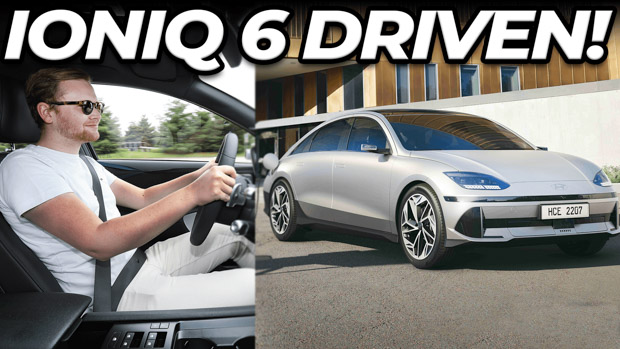
Ahead of the electric sedan’s global reveal in July, Chasing Cars travelled to Hyundai’s closely-guarded Namyang research and development facility in South Korea to drive prototype versions of the Hyundai Ioniq 6.
Set to compete directly with Australia’s best-selling electric car – the Tesla Model 3 (from $65,500 before on-road costs), the Ioniq 6 will be released locally in early 2023 with similar pricing to its well-regarded Ioniq 5 midsize SUV sibling.
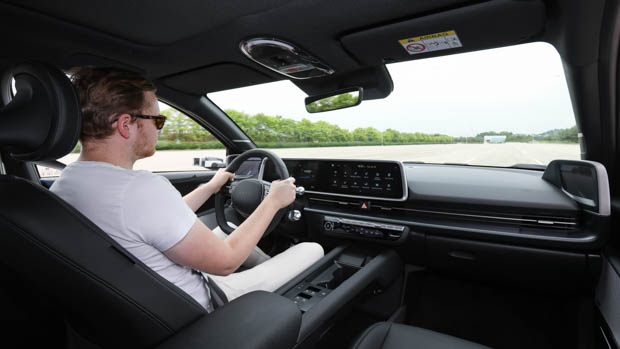
Likely Australian specifications for the Ioniq 6 are already known. There will probably be a choice of a mid-spec rear-wheel drive model with about 168kW of power and 350Nm of torque, priced at approximately $70,000 before on-road costs, and a quicker top-tier AWD grade with around 239kW/605Nm for nearer to $80,000. There will be no true base model.
Final specifications are yet to be confirmed for Australia, but an educated guess suggests that both drivetrains will share a 77.4kWh usable lithium-ion battery. A smaller, lighter, lower-range 58kWh battery will be available in many markets and may come to Australia later as a base model.
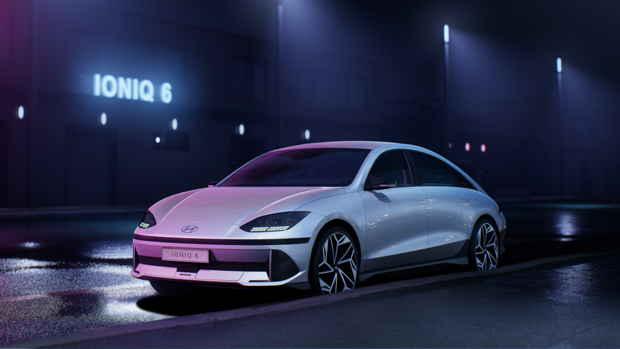
Later on, it’s likely that Hyundai will release an Ioniq 6 N model. The company is already running a rolling hot-EV testbed called RN22e – a prototype that uses the Ioniq 6’s body with additional downforce. RN22e borrows the Kia EV6 GT’s 430kW/740Nm dual-motor tune, but Hyundai is working on its own sporty-EV tech with a deep focus on sound and driveline feel.
The Ioniq 6 sits atop the same E-GMP platform as the Ioniq 5, and the two will share many attributes. The number of models utilising this sophisticated 800-volt EV architecture is growing: Kia uses the chassis for its EV6 midsize SUV and forthcoming EV9; the Genesis GV60 luxury SUV will soon launch in Australia, and Hyundai will soon reveal an Ioniq 7 three-row crossover.
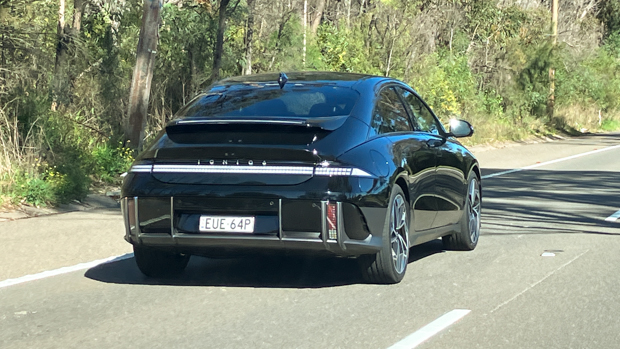
As exclusively revealed by Chasing Cars, a black-painted Ioniq 6 is already being tested in Greater Sydney as Hyundai Australia’s engineers validate its suspension tune for local consumption and, if necessary, make subtle changes to the damping to suit our infamously broken B-roads.
But when we drove the ‘I6’, the small fleet of RWD and AWD sedans for our sampling were still covered in heavy camouflage. These were Korean domestic market (KDM) specifications with KDM suspension tunes – meaning there’s still room for some movement back in Australia.
Our road test was pretty sedate, being a 15km loop around the town of Namyang. While we were allowed to launch the cars from rest to 120km/h within the confines of the R&D facility, on the road we didn’t breach 60km/h. Still, there were plenty of potholes, grates and road imperfections for us to aim at, and we did.

Doing so provided a limited first impression that the KDM suspension tune appears to be quite decent, at least at low and moderate speeds. The rebound damping feels tighter than the softly-sprung Ioniq 5 and there was no ‘crash’ into the cabin from allowing a heavy 19-inch or 20-inch wheel to drop into a pothole. Unless the ride or control diminishes substantially at higher speeds, it seems like the Australian team don’t have a big job on their hands here.
Whether accelerating gracefully in urban spaces or charging off the line in the 239kW dual-motor AWD version at Namyang’s private drag strip, it’s clear that substantial work has gone into dulling unwanted frequencies from the Ioniq 6’s single- or dual-motors. There is a quiet whirr to be heard but no undesirable high-pitched whines like the kind we observed testing AMG’s EQS53 super-sedan.
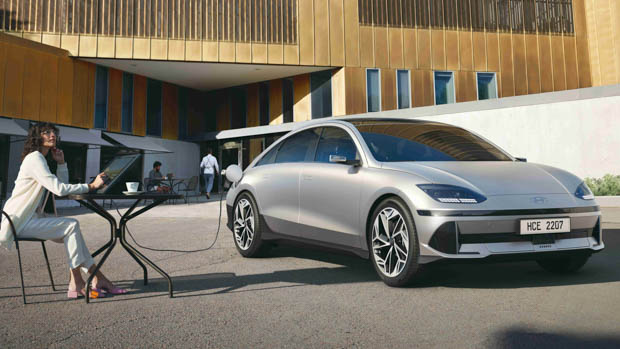
Hyundai haven’t confirmed whether the new car uses the ZF Sachs frequency-selective damping technology fitted to the Kia EV6 locally, as well as Hyundai’s recently-updated Palisade large SUV. We suspect the Ioniq 6 will get these high-tech dampers that settle body control at higher speed to a greater extent than the passive dampers currently fitted to the Ioniq 5.
Steering-wise, we think we detected a heavier steering weight than that found in the Ioniq 5, with greater resistance on turn-in – a feeling that suits the lower, sportier, more engaged vibe of this sedan model. Electric power steering is another variable Hyundai’s Australian specialists can tune, but our initial impressions were positive.
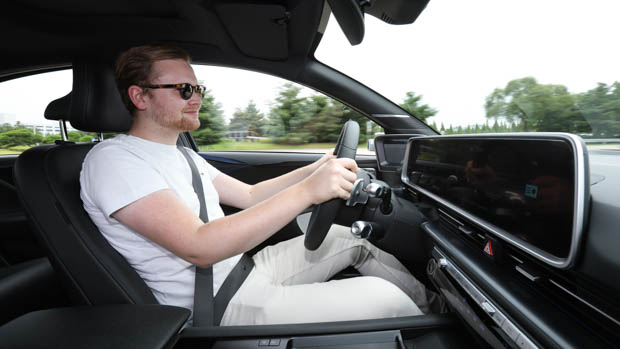
Even under wraps, there was no hiding the slick, curved sedan shape of the model that is totally distinct to the cartoonishly blocky Ioniq 5. Nor was there any disguising the available digital camera-based mirror antennae – a feature that will be available to Australian buyers of the car.
Slide down into the Ioniq 6 – it’s a low-riding sedan, remember – and glide away in near-silence and you notice the digital mirrors define the driving experience to a much more subtle degree than the Audi E-tron, which was the first car to debut the tech in Australia. The Audi’s mirror displays are too small, and appear too zoomed-in, making the car difficult to park. The Ioniq 6’s field of view seems wider, even if this tech can seem like the answer to a question nobody asked.

The Ioniq 6’s dashboard has been designed in sympathy with the mirror displays, which sit proud of the curved sweep of trim – though lower-end specs with traditional mirrors don’t seem undercooked inside. The cabin aesthetic is very similar to that of the Ioniq 5, with a few additional flourishes – including a metal-look garnish that surrounds the car’s twin 12.3-inch displays.
Wireless smartphone mirroring is annoyingly still off the agenda due to a years-long feud between Hyundai Motor Company (HMC) and a large smartphone manufacturer – but wired phone connectivity is there, and Hyundai’s own software is easy to navigate.
Other small progressions from the Ioniq 5’s cabin include a change to the steering wheel. Still featuring four squares in lieu of Hyundai’s H-mark – the squares spell ‘H’ in morse code instead – the Ioniq 6’s wheel detailing lights up at various moments, including when voice command is summoned.
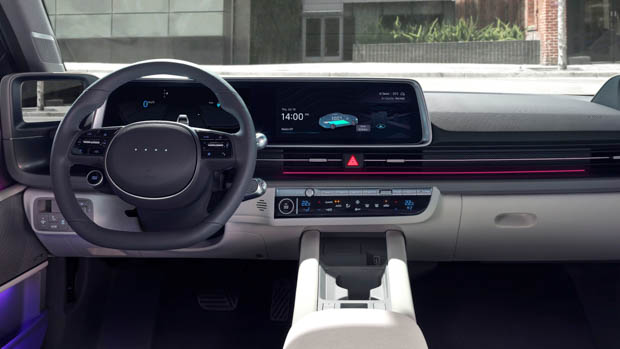
Australia’s high-spec Techniq AWD variant will likely score full leather with heating and cooling, plus a trick relaxation mode for the front seats allowing a significant degree of recline to rest while rapid-charging the car – a feat that can be completed in 18 minutes if you use a gold-standard 350kW DC outlet.
Design-wise, the Ioniq 5 has been well-received, its shape reflecting that of the Hyundai Pony of the 1970s, and the Lancia Delta – both penned by Giugaro. By contrast, the Ioniq 6 takes its cues from Hyundai’s Prophecy concept car of 2020. The production ‘6’ isn’t quite as cohesive as the show car, but it’s not worlds away – and we appreciate that it’s a low, sporty vehicle in an advancing sea of bulky electric SUVs.

Keeping the Ioniq 6 low and sleek has also afforded it a substantial aerodynamic edge over the Ioniq 6 – and over nearly every other production car bar one Europe-only trim of the Mercedes-Benz EQS. With a drag coefficient of Cd 0.21, the Ioniq 6 is seriously slippery, giving it a range advantage of around 20 percent compared to a similarly-specified Ioniq 5.
Hyundai says that this factor will allow some variants of Ioniq 6 to crack 600km of range on the reasonably accurate WLTP cycle – though achieving this number requires selecting a combination of the largest battery and the lightest spec – small wheels, RWD, no sunroof – in other words, a base grade Australia may not get.
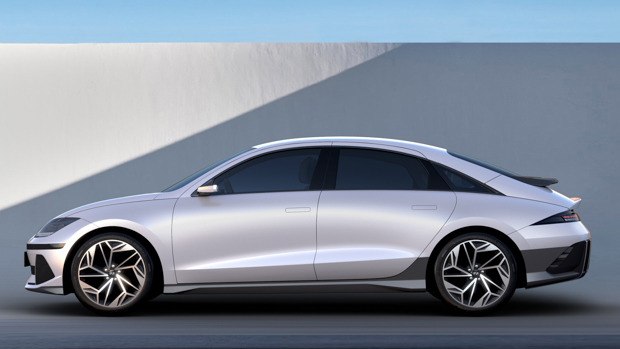
But even Australia’s high-spec version, featuring the 239kW dual-motor powertrain, large 20-inch wheels, and luxuries like an opening panoramic sunroof, will likely land somewhere around 530km range (WLTP) – well beyond that of a top-spec Ioniq 5, and more in line with a Tesla Model 3. Australia’s 168kW RWD version may sit somewhere around 570km range.
Tesla remains the efficiency king in electric motoring – a frontier beyond simply putting larger batteries into cars. While the Ioniq 6’s likely consumption of between 13.5kWh/100km (RWD) and 14.5kWh/100km (AWD) in Australian specification is frugal, Tesla’s Model 3 Long Range (AWD) achieves 12.5kWh/100km (WLTP).
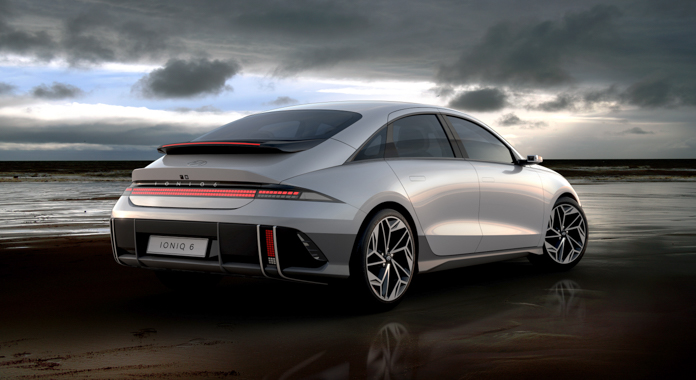
It also remains a tough job to combat Tesla customers’ still-exclusive access to the company’s reliable Supercharger network in Australia, though this network might eventually open up to all EV drivers. For now, rapid-charging a non-Tesla in Australia remains a task of navigating a patchwork of operators of varying trustworthiness, though the emergence of big brands like petrol-reseller Ampol to the EV charging scene is a positive development.
The problem can be overstated, though, as the majority of EV drivers arrange for a charging solution to be fitted at their home or office – unlocking the convenient overnight charging that is the killer unique selling point of electrified vehicles.
As Hyundai’s Australian team completes their validation work on the Ioniq 6’s suspension and steering tunes, the model draws closer to its local release in early 2023. Final pricing, model details and specifications will be released in the coming months.
About Chasing cars
Chasing Cars reviews are 100% independent.
Because we are powered by Budget Direct Insurance, we don’t receive advertising or sales revenue from car manufacturers.
We’re truly independent – giving you Australia’s best car reviews.
The estimate provided does not take into account your personal circumstances but is intended to give a general indication of the cost of insurance, in order to obtain a complete quote, please visit www.budgetdirect.com.au. Estimate includes 15%^ online discount.
^Conditions Apply
Budget Direct Insurance arranged by Auto & General Services Pty Ltd ACN 003 617 909(AGS) AFSL 241 411, for and on behalf of the insurer, Auto & General Insurance Company Limited(ABN 42 111 586 353, AFSL 285 571).Because we don’t know your financial needs, we can’t advise you if this insurance will suit you. You should consider your needs and the Product Disclosure Statement before making a decision to buy insurance. Terms and conditions apply.
Indicative quote based on assumptions including postcode , 40 year old male with no offences, licence suspensions or claims in the last 5 years, a NCD Rating 1 and no younger drivers listed. White car, driven up to 10,000kms a year, unfinanced, with no modifications, factory options and/or non-standard accessories, private use only and garaged at night.
^Online Discounts Terms & Conditions
1. Discounts apply to the premium paid for a new Budget Direct Gold Comprehensive Car Insurance, Third Party Property Only or Third Party Property, Fire & Theft Insurance policy initiated online on or after 29 March 2017. Discounts do not apply to optional Roadside Assistance.
2. Discounts do not apply to any renewal offer of insurance.
3. Discounts only apply to the insurance portion of the premium. Discounts are applied before government charges, taxes, levies and fees, including instalment processing fees (as applicable). The full extent of discounts may therefore be impacted.
4. We reserve the right to change the offer without notice.